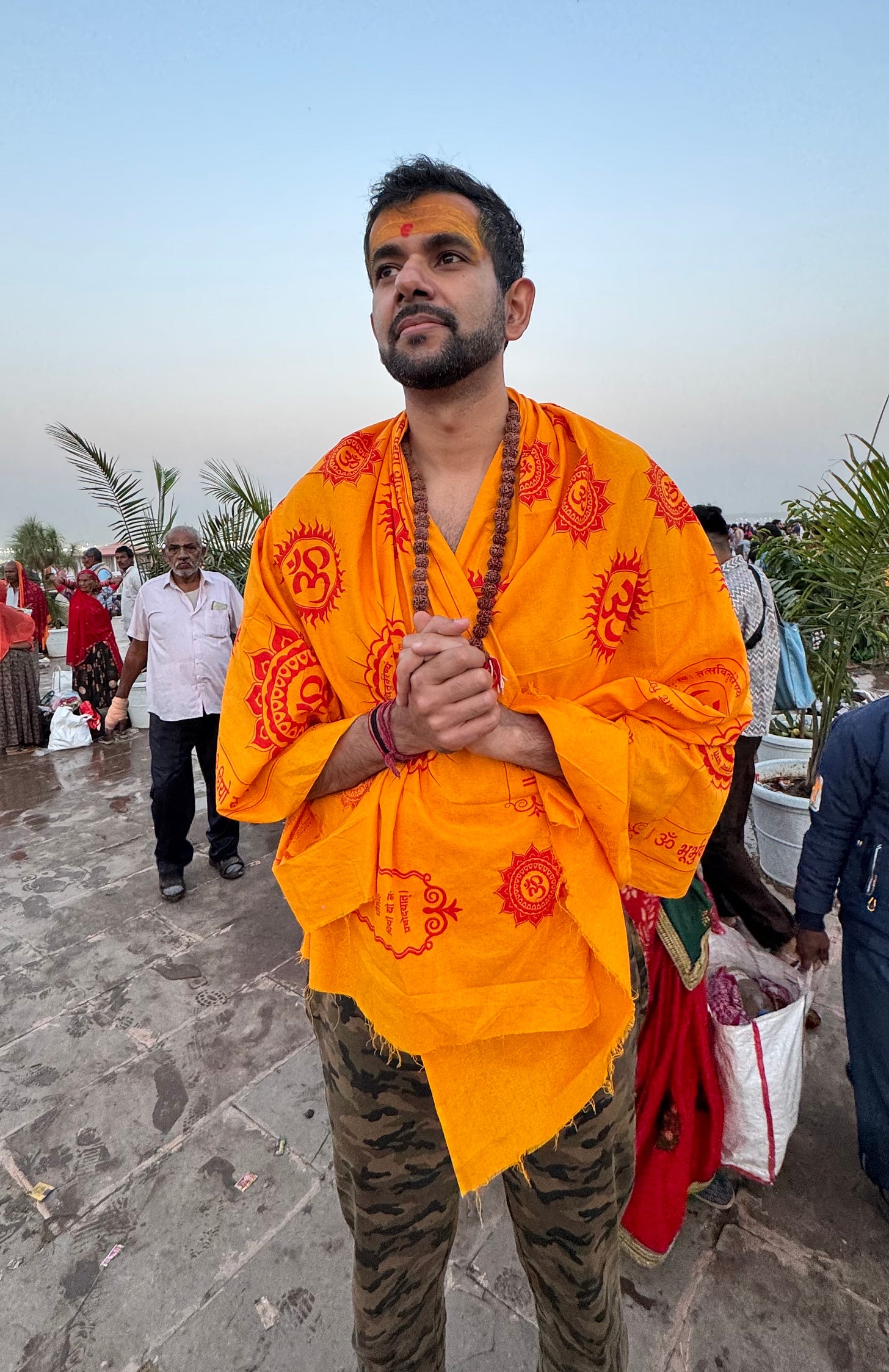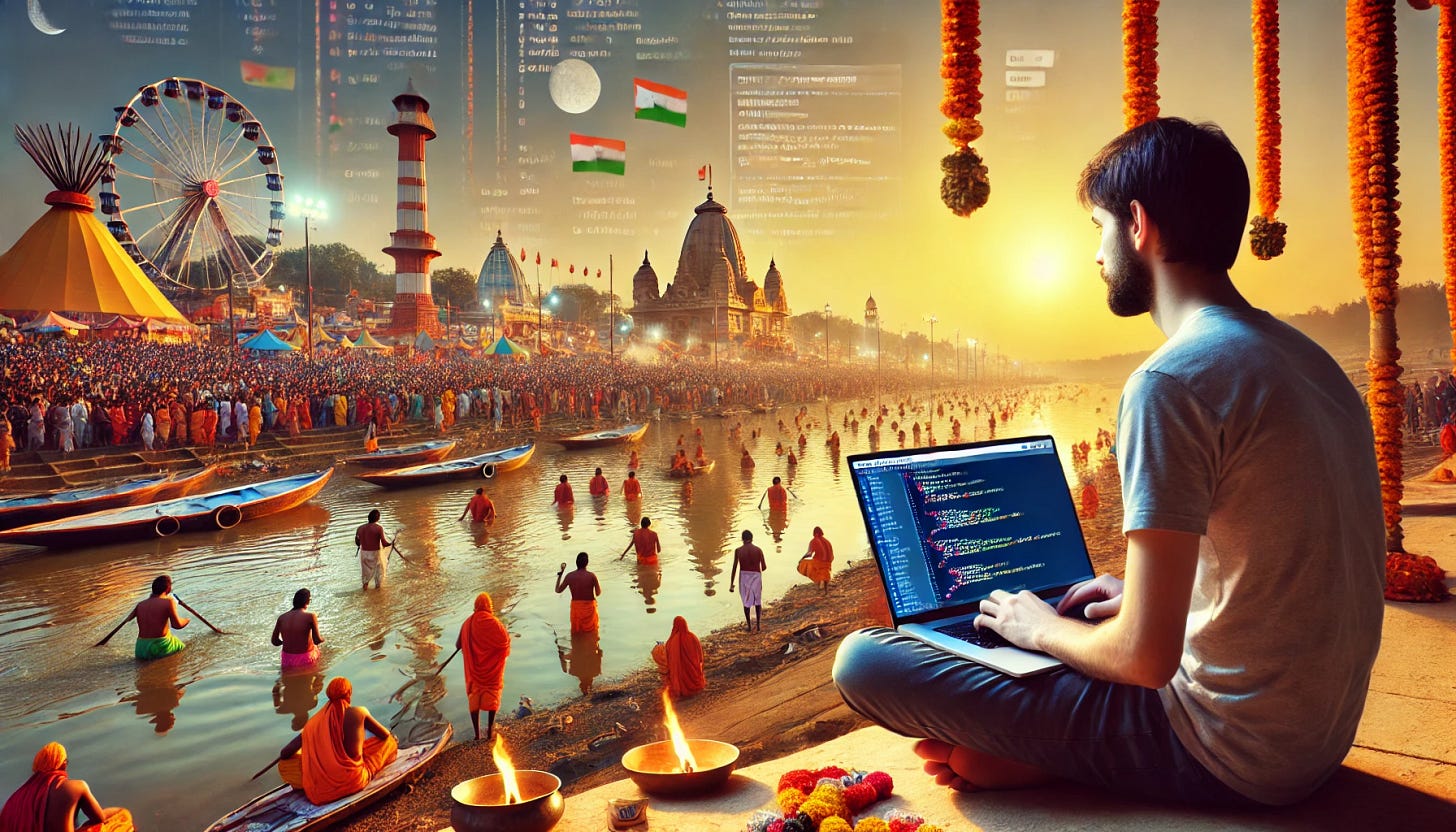The thought struck me like a revelation at the Mahakumbh. This weekend, as I walked through the massive gathering, the air filled with chants, the scent of incense mixing with the cold river breeze, I noticed something extraordinary. There were ascetics lost in deep meditation, families performing sacred rituals, and scholars passionately debating philosophy—all coexisting without contradiction. It was then that I realized: Hinduism is not just a religion; it is the world’s first open-source model for life. And I’m amazed how this falls beautifully alongside our development ecosystem today!
Hinduism has never been about enforcing a singular ideology. It is an ever-evolving system, welcoming different perspectives without losing its core essence. You can be a believer in one god, many gods, or none at all, and still be part of its fabric. There are no mandated texts that one must follow to belong. Instead, a vast repository of wisdom—the Vedas, Upanishads, Puranas, and countless local traditions—exists as a guiding framework open to interpretation.
In the world of technology, this is akin to open-source software, where multiple developers can modify and enhance the system while preserving its core functionality.
Like an open-source software, Hinduism encourages customization. You can choose devotion (bhakti), selfless service (karma yoga), deep philosophical inquiry (jnana yoga), or meditation. There’s no single right way; instead, there are endless ways to engage. Temples in South India may follow intricate rituals, while some communities in the North may simply light a lamp and pray. A Shaivite, Vaishnavite, or Shakti devotee can follow their own path without invalidating others. All are valid expressions.
Similarly, in tech, open-source platforms allow users to build on existing systems, integrating features that suit their needs while keeping the core intact. Amazing!
Hinduism never needed to conquer or impose itself on others. Whether it was Buddhism, Jainism, or even later influences from Islam and Christianity, Hinduism absorbed and integrated. An atheist and a theist can both be Hindus, just as multiple coding languages can work together in an open ecosystem.
This mirrors the way open APIs and modular software allow various systems to communicate and grow without forcing users into a single framework. Remember the last time two systems got integrated and it felt like magic? :)

As artificial intelligence advances, the debate between proprietary control and open-source collaboration becomes critical. Do we build closed systems that restrict innovation, or do we allow open contributions that push humanity forward?
The recent debate about DeepSeek being an open-source model compared to ChatGPT from OpenAI has renewed the debate on how open source and closed models for AI LLM be governed.
In an era where AI decisions affect everything from ethics to economy, we must ask ourselves: Should we build walls, or should we build bridges?
Hinduism chose bridges. Should our technology do the same?





This was delightful, thank you.
Excellent piece!!